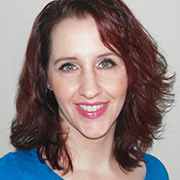Mark Valenti’s professional career has taken plenty of turns since the Pittsburgh native graduated from Penn State with an economics degree. While working as a banker he played in a rock band that actually earned some airplay and did some touring. Enamored with studio recording, he wound up pursuing a degree in recording engineering and launched his first recording facility, Highland Studios in Dermont, about 40 miles east of his hometown.
Valenti continued to establish himself as an acoustics consultant and after working for broadcast production and recording design and engineering firm Synergistic Technologies in the early 1990s, took yet another turn.
Valenti saw a stalled market in broadcasting because of FCC regulatory changes in the early 1990s and a huge opportunity in the higher education market for cutting edge technology and infrastructure design. The Sextant Group was born in 1995 and has since worked on 1,500 projects for more than 500 clients in 43 states and 11 countries. The company, headquartered in Pittsburgh, has seven offices from New York to California and is among Pittsburgh’s Top 40 Best Places to Work. Earlier this year, Valenti was named to the System Contractor News’ Audio-Visual Hall of Fame.
The company has grown to offer telecommunications, security and specialty lighting services, while Valenti stays on the forefront of developments in this rapidly changing industry. While the sluggish construction market of the last couple years has slowed growth, Valenti again sees new opportunity in intelligent building design and is among those helping create standards and processes for what is expected to be a burgeoning line of business for Sextant.
What was the hardest part about starting The Sextant Group?
The hardest thing to do if you’re not sitting on a pile of money is borrow enough money to make the business viable. I was married then and took out a home equity line of credit on my house. Our first year revenue was $60,000 and there were three of us in the company then. I was able to borrow $30,000 from the bank and three of us managed to scrape together a living for about a year. That was probably the hardest part. It was a new kind of business, it was a consulting, so it wasn’t like we had physical assets. We weren’t making things. When you’re a services company, it’s hard to look around and show value and that made it hard to get that first major client.
How did you get that first big customer?
In the end it was a personal reference that got me to the table for a big project opportunity that our architectural team was awarded. It happened to be at Penn State, which for me was quite an amazing experience. It happened almost exactly 20 years after I graduated. The job was the student union renovation and expansion. I earned a degree in economics there and never thought I’d be back in this capacity.
What resources helped you grow the company in those early years?
I was fortunate to eventually meet a banker in the Pittsburgh area. In 1999, Tom Nunnally had just gone to work for a new startup bank called Enterprise Bank and he took me out to lunch after I had all these meetings with all these bankers. We went to a brewery and he asked if I wanted a beer. I said ‘This is my banker.’ Tom was able to see what our business model was, what our challenges were and put a package together that included some SBA funding and we never looked back. That was the tipping point for us. Enterprise is still a valuable resource for us. They’re a business to business bank, no branch banking and no consumer banking. It’s not what most people think about when they think of a bank.
How have you managed the changes in the construction and technology sectors?
We were early to market and organized ourselves a little differently than some of the consultants who had been in the market prior to us. I came from a heavy broadcast background and realized early on it would be network intensive. Where more traditional media was about ‘What kind of wire do we use,’ we were looking at ‘How do we digitize this on the network?’ We were able to command a premium rate for a long time.
Since the recession, or maybe even the beginning of last year, the market has changed dramatically. We’re in the construction market. Even though we’re technology consultants, the construction market is where our fortunes rise or fall. In the last year it has become extremely tight, a buyer’s market. We’re characterizing a 30 percent discount on rates we were able to command a couple of years ago. It’s the same scope of work. If anything, it’s a little more demanding. That’s been coupled with significant design upheaval, moving from 2D auto-cad to 3D building modeling. The building modeling environment is faster, more efficient and has better outcomes. But the technology investment to get where we need to be has been a bit of a whipsaw the last 18 months. We’ve had falling rates for our services, increasing costs for our technology infrastructure, and training and skills are being reconfigured and reorganized for the new marketplace. The last 18 months have probably been the most challenging in the company’s history.
In a market that has grown increasingly competitive, how have you differentiated The Sextant Group?
We do command a terrific brand reputation that we always preach – best in class. The challenge is to maintain all that and I don’t see us growing significantly again until about another year. Our level of activity is increasing month-by-month. We’re a lagging indicator in the market. We’re last ones to the recession and the last ones to recovery.
Ostensibly we’re technology consultants with five disciplines – infrastructure design, IT design, security system design, acoustics and technical/architectural lighting. We differentiated ourselves a couple of years ago. We hired a principal consultant in 2011 to join us who is a faculty trainer. About 80 percent of our business is higher education and we wanted to demonstrate our deep commitment. We’re not just about projectors and screens and wireless networks, but we truly as a firm understand how teachers teach and students learn.
What’s next for your company?
There is a really exciting undercurrent in our market, that if you’re on the inside you’re at least aware of it and if you have any sense of the next decade or two, that is the movement to intelligent buildings. For most of us the last 15 years we’ve experienced the birth and growth of the internet as a communications tool for humans. The next generation of internet is going to be intelligent devices communicating with intelligent devices. At its very simplest, it’s an occupancy sensor in a room that doesn’t just turn off the lights, but also informs the HVAC and security systems and projectors and whatever else might be there. It’s about buildings that can predict its environment. The emerging intelligent building market is going to be a huge deal and it’s being generated by awareness of energy consumption. The low-hanging fruit is cutting energy costs. The high-hanging fruit is creating superior environments.
I have been sitting on some industry task forces for five years. The first was extremely exploratory and the second one, we’ve been doing some pretty meaningful work the last couple years. We’ve been generating job descriptions – what is this person who manages the intelligent building design process? The second half of that is who is that person? What skills do they need? What process do they need to follow? We’ll probably see a release of that information by 2014. A couple of my colleagues developed a corollary to LEED ratings in the technology arena for sustainable technology environments that is brand new and announced last June. We just had a client agree to pursue that rating system. There are a lot of interesting things going on.
— by Joe Petrucci


http://www.thesextantgroup.com/
700 Waterfront Drive Suite 200 Pittsburgh, PA 15222


